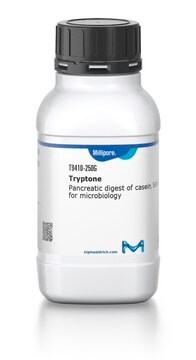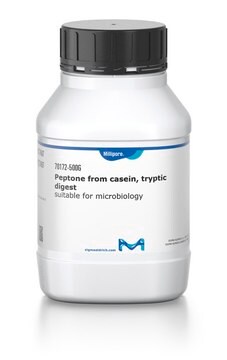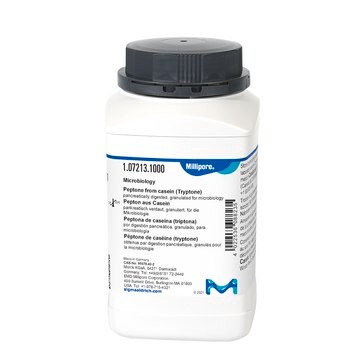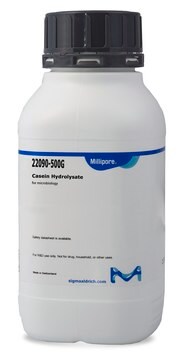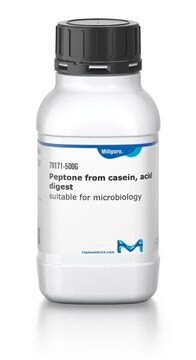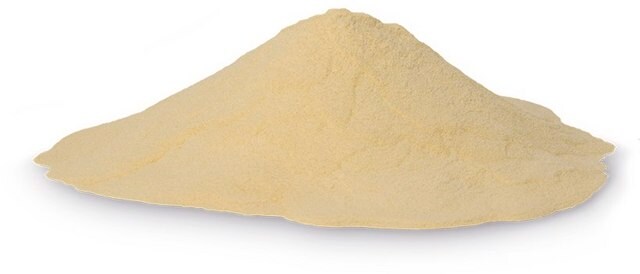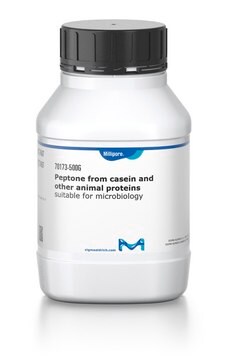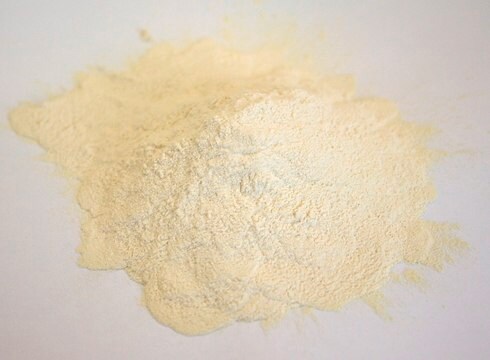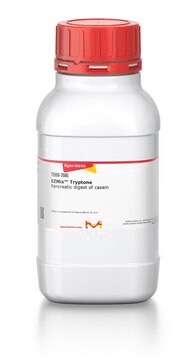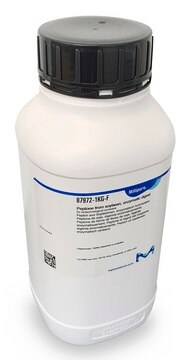82303
Casein Peptone
Enzymatic digest of casein from bovine milk, ~0.3 AN:TN ratio, suitable for biotechnology and microbiology
Synonym(s):
Peptone from casein, Peptone from casein, enzymatic digest
About This Item
Recommended Products
product name
Peptone from casein, enzymatic digest, Enzymatic digest of casein, for biotechnological purposes
biological source
bovine milk
Quality Level
grade
for biotechnological purposes
form
powder
composition
total nitrogen (N), ~13%
nitrogen analysis
, ~0.3 AN:TN ratio
ign. residue
<17%
loss
<6% loss on drying
pH
7.0±0.5 (2% in H2O)
solubility
H2O: 2%, clear, yellow to tan
water: soluble 2%, clear, faintly brown-yellow
application(s)
food and beverages
microbiology
Looking for similar products? Visit Product Comparison Guide
General description
Application
Bacterial cultures for short term storage of bacteria.
The basal Glucose Yeast Peptone (GYP) medium.
As nitrogen supplement in the culture medium of Ceriporiopsis subvermispora.
Culture medium of Methylobacterium rhodesianum and Ralstonia eutropha.
Storage Class
11 - Combustible Solids
wgk_germany
WGK 1
flash_point_f
Not applicable
flash_point_c
Not applicable
ppe
Eyeshields, Gloves, type N95 (US)
Choose from one of the most recent versions:
Already Own This Product?
Find documentation for the products that you have recently purchased in the Document Library.
Customers Also Viewed
Articles
Culture media provides a habitat with suitable nutrients, energy sources, and certain environmental conditions for the growth of microorganisms. The components of the culture media range from simple sugars to peptones, salts, antibiotics, and complex indicators.
Our team of scientists has experience in all areas of research including Life Science, Material Science, Chemical Synthesis, Chromatography, Analytical and many others.
Contact Technical Service
